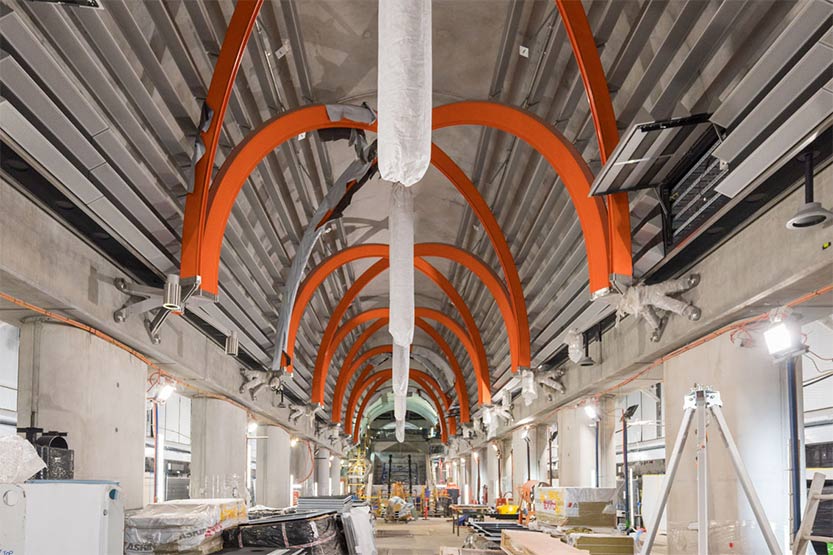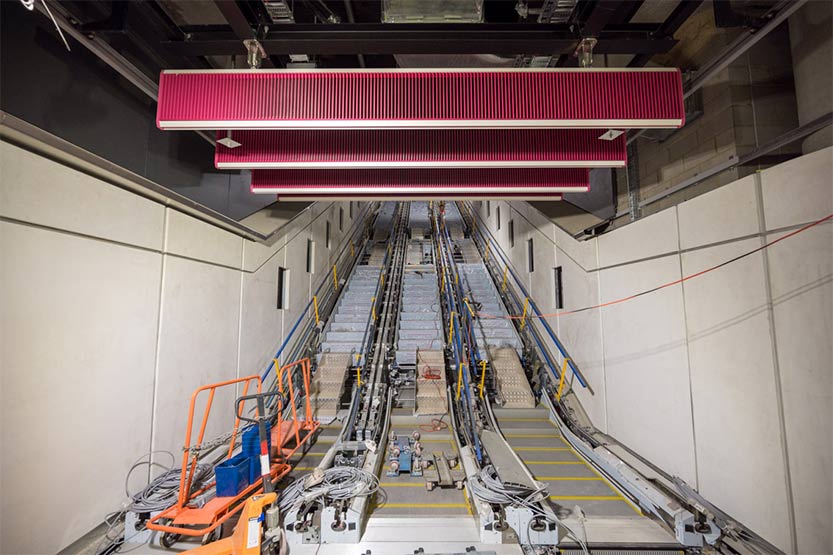State Library Station is taking shape in the heart of the CBD
New images have revealed the massive progress taking place on State Library Station deep beneath the CBD as part of the Metro Tunnel Project.
Sitting about 40 metres below the hustle and bustle of La Trobe St, the new station is making leaps and bounds towards opening in 2025, with 27 escalators and 19 lifts now fitted out.
The station has a direct pedestrian connection to Melbourne Central Station, which will allow passengers to change seamlessly between City Loop and Metro Tunnel services without passing through Myki gates.
A two-and-a-half-month operation to dismantle a noise-cancelling shed, supporting the construction of State Library Station, was finished in March.
A second shed on Franklin St will be dismantled later this year, paving the way for work to begin on the Franklin St entrance to the station.
State Library Station is one of two CBD stations – the other being Town Hall Station – being built as part of the Metro Tunnel Project, to ease congestion on the City Loop.
There will be a total of five new underground stations – including Anzac (Domain), Parkville and Arden stations – that will form the Metro Tunnel network, providing more ways to move around Melbourne.
While work continues across all five stations, turn-up-and-go services have been trialled for the first time in a critical phase of the project’s complex testing program.
Crews successfully ran test trains as frequently as every two minutes between West Footscray and Hawksburn during testing last month.
The team will start test running timetabled services with drivers and station staff in a dress rehearsal later this year, to ensure everything is ready for a safe and reliable opening for passengers.
The Metro Tunnel is the biggest upgrade to Victoria’s train network since the City Loop opened in 1981.
It will connect the busy Sunbury and Cranbourne/Pakenham lines via twin tunnels under the city, creating an end-to-end rail line from the north-west to the south-east and better connecting all Victorians to jobs, health, and education. •

Council endorses office tower at Flinders Lane despite querying car park demolition





 Download the Latest Edition
Download the Latest Edition